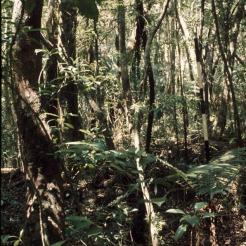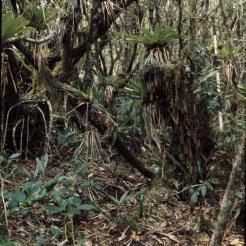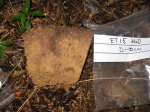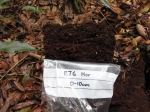Four criminal and civil prosecutions have been filed against me since 2013 by Natural Fruit Company Ltd, an exporter of tinned and concentrate pineapple and member of NatGroup.
More prosecutions were threatened last week also by the Thai Pineapple Industry Association (TPIA), whose President owns Natural Fruit, after an international solidarity campaign.
The first criminal trial in these cases, together carrying a maximum prison sentence of 8 years and a US$10m damages claim, starts today, 2nd September 2014.
But I am indeed not a criminal. I am just a 34 year old British migrant rights defender and researcher working in Thailand for a decade now. During this time, I simply tried to empower and defend migrant workers, particularly from Myanmar. I feel I can contribute uniquely and effectively on this issue.
In my mind, I have two greatest achievements in my life so far. First is supporting the founding and growth of the Migrant Worker Rights Network (MWRN), a Myanmar worker funded and managed migrant organisation that continues to make me proud and happy.
Second is organising Daw Aung San Suu Kyi’s 2012 visit to Myanmar migrants in Mahachai, Samut Sakhon Province, at the office of MWRN.
Natural Fruit Company determined to punish me
Given my character and area of work in defending and empowering migrant workers, I have disputed with many people. Particularly employers, official, brokers and companies. But beyond some expression of discomfort by those on the receiving end, sometimes of public denunciations when companies or people didn’t respect migrants’ rights and continued to refuse to do so, I never faced many problems.
I began to work more closely with Thai industry, particularly the food industry. I have even acted as a migration advisor for a number of major food export companies since the beginning of 2014.
However, this situation changed after the launch in January 2013 of a Finnwatch report on working conditions in Thai tuna and pineapple processing factories that exported to Finland and other Western countries. It exposed appalling practices including forced and child labour, unlawfully low wages, excessive overtime, abuse by managers and unsafe working conditions.
Although I only researched the report and did not publish it, Natural Fruit Company Ltd – Thailand’s biggest exporter of pineapple products – decided to harass me over the report and its findings. I was an easy target as I live in the region.
It took a while to understand and adjust to the situation I was in. My future life and decisions and movements became restricted by Natural Fruit Company’s private actions.
Once the Attorney General approved the first of 3 criminal charges against me in June 2014, I was detained in a cell prior to being granted bail, actually paid for by the Thai seafood industry – which has committed to working with Finnwatch to improve migrant working conditions.
From then on, my passport was confiscated by the Court as I was a perceived flight risk, even though I returned to Thailand from where I lived in Myanmar just to fight the cases. Now the Thai government and courts formally will decide my fate.
This cloud has a silver lining – for the food workers
My prosecution made me realize however that every perceivably negative situation can be seen in a positive light. The increasingly high profile nature of the judicial harassment against me has proven to be beneficial in contributing to achieving more effectively just those goals of increased rights and access to justice for migrants in Thailand that I have worked hard to achieve for so many years.
My harassment is being used effectively by me, consumer groups, trade unions and rights groups as a means of increasing awareness and interest of consumers and importers of Thai products on the systematic nature of migrant exploitation in Thailand and the link to trade, export and corporate social responsibility. With more awareness surely comes more pressure for positive change and then eventually the change itself.
Already United Nordic, the giant Nordic buyer, has spoken out against the Thai food industries actions in prosecuting me. Now the Ethical Trading Initiative has followed suit, and more support is on the way. Natural Fruit’s actions are impacting negatively on Thailand’s reputation and its economy, not only itself.
At least 10% of Thailand workers are vulnerable migrants
For almost 3 decades, Thailand’s export orientated economy has been dependent on millions of overseas migrants, particularly from Myanmar and Cambodia. These generally impoverished low skilled workers fled from military dictatorships or economic stagnation.
They make up at least 10% of the labour market in Thailand, if not more. Increasingly these vulnerable workers make up the majority of workers in low skilled labour intensive food export and other industries.
Exploitation of migrants by employers, officials and brokers is widespread and systematic in Thailand. Thai migration policy has always been a shambles, devoid of long term planning and the rule of law. Corruption and abuse of power are all encompassing features of the migration system here, every day experiences for the workers themselves.
For this reason, in 2014 Thailand fell to Tier 3 on the US government’s trafficking in persons (TIP) annual report. Migrants are generally silent in the face of abuse and oppression. To stand up and defend their rights, to fight for better conditions, would risk their lives.
Abuse is widespread in export industries
Abuse experienced by migrants in Thailand, often treated as second class citizens or walking ATMs, extends to many export markets. Consumers across the world should be increasingly aware of this. The abuse extends beyond fishing, seafood and pineapples, those products whose abusive supply chains have already been well publicized.
Abuse against migrants is also present in the poultry, fruit, vegetable and rubber industries. Even more now, migrants are working and facing abuse in Thailand’s retail, food and beverage and tourism industry too. This abuse needs publicizing and addressing also.
There are good employers, good companies and good conditions within some labour intensive export industries in Thailand. It’s important to stress this point and promote these ‘good apples’.
But in my experience, these good, ethical and respectable companies are in the minority. Selfish business attitude, appalling treatment of workers, particularly migrants, as machines or commodities to use for personal profit too often trumps respect and rights.
It’s time for change in Thailand, and it’s time for consumers, purchasers and retailers to take a stand against abuse of workers, particularly migrants, that is ongoing. It’s time for Thai industry to face the reality of the situation, address challenges they face, weed out bad guys and promote the good guys.
Our retailers must take a lead – and pay more for ethical produce
Respecting workers rights should also be rewarded and paid for. Lowest priced products can contribute to abuse so we all may have to pay more. Importantly, large retailers or purchasers may need to make less, manufacturers to provide workers more. Workers deserve a share of the profit of their hard work.
Whatever happens in my own personal criminal prosecutions, only time will tell. The past few weeks have shown me however that I am not alone in my campaign to address migrant conditions in Thailand, whatever may happen. Indeed I have never felt alone in the battle either.
Unions, rights groups, consumers and even now purchasers and buyers of Thai products, as well as sectors of Thai industry itself, have come out to support my work and the principles I fight for. I have a strong and committed group of colleagues on the ground here too.
Andy Hall is an investigator and campaigner on migrant workers’ rights in Thailand, one of the world’s major exporters of tropical fruits and fish to worldwide markets. He blogs at andyjhall.wordpress.com/.
The Finnwatch report: Cheap has a high price.










